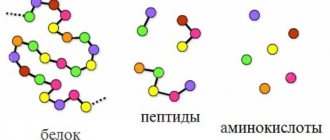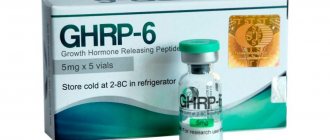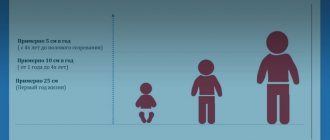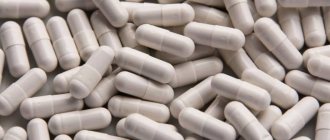Ghrp 6 is a peptide that has gained recognition among athletes (especially in bodybuilding) due to its ability to stimulate the production of endogenous growth hormone. This effect is due to its interaction with receptors for the hunger hormone ghrelin. In response to their stimulation, the body begins to produce growth hormone.
The use of GHRP 6 makes it possible to burn excess fat in a shorter period of time, increase muscle mass, and gain relief during drying. The peptide has a rejuvenating effect on the body, slowing down catabolic processes and accelerating tissue regeneration. One of the features of ghrp 6 is its ability to induce appetite. This effect is considered a side effect, but is successfully used for weight gain. It is also based on the interaction of the peptide with ghrelin receptors.
How to increase the production of growth hormone?
There are many ways to increase the production of your own growth hormone. Below are just a few of them.
- Fasting for short periods of time helps increase growth hormone levels.
- Intense training also triggers the release of large amounts of GH, which is associated with muscle fiber damage.
- Taking arginine stimulates the production of somatotropin by 60%. • Taking beta-alanine leads to an increase in GH levels by 22%.
- Normalizing sleep and limiting carbohydrates in the diet helps to increase the content of somatotropin in the body.
In addition, taking alpha gpc and other drugs stimulate the release of GH, but in all of these cases it will not be sufficient to achieve anabolic and other effects. Therefore, it is better to use stimulants like ghrp 6 or ghrp 2 to significantly increase the level of growth hormone.
Frequently asked questions about GHRP 2:
Question: Is this an AAS (Anabolic/Androgenic Steroid)?
Answer: No, this is a peptide drug that does not have the side effects of AAS, is legal in the Russian Federation and is not classified as an AAS.
Question: How much can I earn for the course? Answer: Depending on your diet and workout routine. Average figures are 5-10 kg of muscle mass per course.
Question: Duration of the course? Answer: 4-12 weeks, after a break of at least a month.
Question: Is PCT required? Answer: No, the product is harmless and does not require PCT.
Question: Need support on the course?
Answer: No, the peptide is absolutely safe for health and does not have a negative effect on the body, no support is required.
Question: Is it true that appetite improves when taken? Answer: Yes, the peptide stimulates the production of ghrelin, which increases appetite.
Question: How to check authenticity? Answer: You can check for originality using the receipt code inside the package, which is entered on the official Nanox website.
Question: What is best to combine this drug with? Answer: With other peptides that stimulate the growth of muscle mass and strength. For example, CJC, MGF, Ipamorelin and others.
Ghrp 6 (ghrp 6): how to take, dilute, reviews
According to the instructions, ghrp 2 peptide is taken by injection or intranasally (into the nose). To dilute the powder, as a rule, water for injection or saline is used. Among the reviews that users leave online on various forums, you can find positive and negative. The diversity of opinions may be evidence of dishonesty of sellers who offer a low-quality product. This circumstance, together with insufficient consumer awareness, contributes to the emergence of a negative attitude towards peptides.
Peptide bioregulators and their application: from neonatology to gerontology
The peptide drug Cortexin, which is a complex of natural low-molecular compounds from the brain of animals (a highly purified extract of nuclear proteins), continues to be one of the most widely discussed pharmacological agents in periodical medical press. At the same time, two aspects attract attention: firstly, the use of Cortexin by representatives of various medical specialties (multidisciplinary in the intended use of the drug), and secondly, the absence of age restrictions on its use. In the modern pharmacopoeia there are not too many similar drugs that do not have age-related contraindications and restrictions on use. Therefore, Cortexin, rightly called the “drug of the 21st century,” deserves more detailed consideration [1].
Categorization and composition of Cortexin
As you know, Cortexin belongs to the pharmacological group 9.7 (“Nootropics (neurometabolic stimulants)”). According to the ATC system (anatomical-therapeutic-chemical) classification, the drug belongs to the heading N06BX (“Other psychostimulants and nootropic drugs”). Among the x-class peptide drugs (cytogens, cytamins, cytomedins), Cortexin belongs to the cytomedins, which are a highly purified extract of nuclear proteins (fractions 1–10 kDa) and are characterized by a proven property of regulating immunological reactivity [2]. Cortexin is an innovative peptide drug; its substance and dosage forms are protected by patents of the Russian Federation (RF No. 2104702, 2275924, 2195297) and other countries.
Cortexin is a multicomponent drug, the composition of which is not limited to neuropeptide substances. In addition to neuropeptides, Cortexin ingredients are represented by no less than three groups of substances: amino acids, vitamins and minerals. There is reason to believe that the positive effects of the drug are explained not only by the action of amino acids and polypeptides, but also by the neurochemical activity of macro- and microelements and vitamins [3, 4].
In particular, Cortexin peptides contain at least two stimulating amino acids - aspartic acid (446 nmol/mg) and glycine (298 nmol/mg). In addition to the above-mentioned aspartic acid and glycine, Cortexin contains the following amino acids:
- threonine (212 nmol/mg);
- serine (268 nmol/mg);
- glutamic acid (581 nmol/mg);
- proline (187 nmol/mg);
- alanine (346 nmol/mg);
- valine (240 nmol/mg);
- isoleucine (356 nmol/mg);
- tyrosine (109 nmol/mg);
- phenylalanine (162 nmol/mg);
- histidine (116 nmol/mg);
- lysine (253 nmol/mg);
- arginine and other amino acids (202 nmol/mg).
From the information presented it follows that aspartic acid accounts for up to 12%, and glutamic acid - about 15% of the total amino acid content in Cortexin peptides. The drug does not contain methionine. In addition, the stabilizer of the drug is the free amino acid glycine (12 mg), the role of which in normalizing the functions of the cerebral cortex has been proven many times.
Cortexin contains a number of vitamins, in particular water-soluble ones: thiamine (vitamin B1) - 0.08 mcg/10 mg, riboflavin (vitamin B2) - 0.03 mcg/10 mg, niacin (vitamin B3, vitamin PP, nicotinic acid) - 0.05 mcg/10 mg; as well as fat-soluble: retinol (vitamin A) - 0.011 mcg/10 mg, alpha-tocopherol (vitamin E) - 0.007 mcg/10 mg. We must admit frankly that this vitamin composition is optimal for the neurons of the brain, as it is perfectly balanced by nature!
In addition to the five essential vitamins, Cortexin contains many minerals (macro- and microelements):
- copper (Cu): 0.2129 µg/10 mg;
- iron (Fe): 2.26 µg/10 mg;
- Calcium (Ca): 22.93 µg/10 mg;
- magnesium (Mg): 8.5 µg/10 mg;
- potassium (K): 19.83 µg/10 mg;
- sodium (Na): 643.2 µg/10 mg;
- sulfur (S): 152.65 µg/10 mg;
- phosphorus (P): 91.95 µg/10 mg;
- zinc (Zn): 4.73 µg/10 mg;
- molybdenum (Mb): 0.0203 µg/10 mg;
- cobalt (Co): 0.0044 µg/10 mg;
- manganese (Mn): 0.0061 µg/10 mg;
- selenium (Se): 0.0745 µg/10 mg;
- aluminum (Al): 0.3104 µg/10 mg;
- lithium (Li): 0.0340 µg/10 mg [4].
Almost all of the listed mineral substances that make up the Cortexin drug have neuromodulatory and other functions.
Traditional and new areas of application of Cortexin
Cortexin is used not only in the Russian Federation. It is registered and used in countries such as Ukraine, Belarus, Armenia, Uzbekistan, Kazakhstan, Azerbaijan, Kyrgyzstan, Tajikistan and Moldova (the use of Cortexin in all cases was preceded by preclinical and clinical examination).
The most important property of Cortexin, which determines the areas of its use, is considered to be the correction of cognitive functions, but the cognitive-modulating effect of the drug is far from the only one. The nootropic, neurotrophic, anticonvulsant, immunomodulatory (immunoregulatory) and neuroprotective effects of the drug, as well as its anti-stress, antioxidant and metabolic effects are described. In connection with the latter, I would like to especially note Cortexin’s ability to normalize the metabolism of neurotransmitters and regulate the balance of activating/inhibitory amino acids.
Therefore, over the past 10 years, Cortexin has been actively used by Russian doctors in various fields of clinical medicine (neurology, pediatrics, ophthalmology, gerontology, etc.): for traumatic brain injuries, neuroinfections, cerebral palsy (CP), perinatal nerve damage systems, disorders (delay) of psychomotor and speech development, thinking disorders, reduced learning ability, neurotic disorders, attention deficit hyperactivity disorder (ADHD), burnout syndrome, autonomic dysfunction, hypertensive angioretinopathy, glaucoma, diabetic neuropathy, amblyopia, etc. d. [1–6].
It should be noted that new areas of application are being discovered for the drug Cortexin. Thus, Bochkova L. G. and Nosova O. M. (2008) report on the experience of using Cortexin in the treatment of natal cervical injury in newborns, Kamenskikh T. G. et al. (2006) - in the treatment of partial optic nerve atrophy (PANA), Utaganova G. Kh. (2010) - in the correction of cervical spondylogenic lesions in young children [7–9].
Cortexin is actively used in gerontology (cerebrovascular accidents, asthenic conditions, encephalopathy of various origins, etc.) [10]. Suffice it to recall that the drug was first introduced into clinical practice by employees of the Military Medical Academy (on the battlefields in Afghanistan [16, 17]), and then by employees of the St. Petersburg Institute of Bioregulation and Gerontology of the Northwestern Branch of the Russian Academy of Medical Sciences. According to Corresponding Member of the Russian Academy of Medical Sciences, Prof. Khavinson V.Kh., who is the vice-president of the Gerontological Society of the Russian Academy of Sciences, “the use of peptide drugs makes it possible to effectively prevent premature aging, as well as treat diseases associated with age...”.
The use of Cortexin for migraine, recommended by Pak L.A. et al. (2005, 2006, 2008), Izzati-Zadeh K. F. et al. (2006), etc., has already become firmly established in the practice of Russian neurologists dealing with this group of primary cephalgia [11–14]. It is indicated that during a migraine attack, Cortexin stabilizes platelet membranes, inhibits the development of the “serotonin cascade,” suppresses neuronal cortical depression of Leo, reduces neurogenic inflammation of the vessels of the dura mater of the brain, suppresses the release of neuropeptides of pain and inflammation from perivascular afferent fibers of the trigeminal nerve [14].
Preliminary studies by the staff of the Scientific Center for Children's Diseases of the Russian Academy of Medical Sciences suggest that in the near future Cortexin will be used as a means for correcting various forms of neurological deficits accompanying certain types of food intolerance (celiac disease, lactase deficiency, etc.) in childhood, and subsequently in adult patients. But perhaps most impressive is the drug's potential use in the treatment of epilepsy.
Cortexin and epilepsy
Epilepsy therapy is a relatively recent indication for the use of Cortexin. The use of Cortexin in the complex treatment of various forms of epilepsy is reported in the works of Guzeva V. I. and Trubacheva A. N. (2003), Golovkin V. I. (2005, 2006) and Zvonkova N. G. (2006) [15–18 ]. Khorshev S.K. et al. (2002, 2008) consider Cortexin as a corrector of the neuroimmune component of epileptogenesis and, based on data from their own biochemical and neuroimmunophysiological studies, recommend this neuropeptide drug for the preventive treatment of epilepsy [19, 20]. The effectiveness of Cortexin in the treatment of epilepsy in children and adults is discussed in the publications of Tsygan V.N. et al. (2008) and Fedunova G.V. et al. (2008) [21, 22]. The need for correction of cognitive impairment with nootropic drugs for epilepsy is indicated by S. V. Balkanskaya et al. (2007, 2008) and Kalinin V.V. et al. (2009) [23–25]. It is Cortexin that plays an important role in this regard.
Finally, in April 2010, at the XVII Russian National Congress “Man and Medicine”, with the support, a symposium “Neuroprotection in the treatment of epilepsy” was held (chaired by Prof. A. B. Gekht). During the work of this symposium, the speakers (Kalinin V.V., Kalacheva I.O., Odintsova G.V.) reflected both theoretical aspects and their own experience of using the drug Cortexin in the treatment of epilepsy in children and adult patients.
In particular, at the Brain Institute of the Russian Academy of Sciences (N. Yu. Koroleva and G. V. Odintsova) there is a positive experience of using Cortexin in 8,000 patients, and, as A. B. Gekht noted, this institution receives “far from the mildest patients "
It is possible that in the future Cortexin will find wide use in the preventive treatment of febrile seizures (FS), which is the most common chronic disorder of cerebral functions in children.
Cortexin for children - a new form of neuropeptide drug
A new form of the drug called “Cortexin for Children” was registered in the Russian Federation on April 27, 2009 [26].
Cortexin for children is a lyophilisate for preparing a solution for intramuscular administration. 1 bottle (3 ml capacity) contains 5 mg of Cortexin (a complex of water-soluble polypeptide fractions with a molecular weight of not more than 10,000 Da) instead of 10 mg present in the standard form of the drug Cortexin, as well as 6 mg of glycine as a stabilizer.
In fact, Cortexin for children is almost the only example where a nootropic drug is targeted specifically for pediatric patients. It is expected that the new form of the peptide drug (Cortexin for children) will be in demand and will find wide application both in Russia and abroad.
What the “Formular System” is silent about
Previously, we have repeatedly pointed out that in the “Formular System” of Russia there is not even a mention of Cortexin [2, 4, 6]. We have to admit that in the XI issue (2010) of this annually updated publication there is no information about Cortexin again [27]. This is all the more strange when even the Internet encyclopedia Wikipedia provides data on this “pharmacopoeial polypeptide bioregulator with biological activity.”
The composition of Cortexin in the “Register of Medicines” (2010) is presented as follows: “in 1 bottle Cortexin - 10 mg, glycine - 12 mg” (glycine present in the drug simultaneously acts as a stabilizer) [28]. In the Vidal Reference (2010), the composition of Cortexin is described even more succinctly: “a complex of polypeptide fractions isolated from the cerebral cortex of cattle and pigs - 10 mg” [29]. In fact, as stated above, the ingredients are much more numerous.
We will try to present information about Cortexin using a form similar to that typically used in the Federal Drug Administration Guidelines.
Cortexin. A peptide preparation representing a complex of low molecular weight peptides isolated from the cerebral cortex of cattle (calves) and pigs under 12 months of age. To isolate the drug, the acetic acid extraction method is used. In order to obtain a fraction of polypeptides with a molecular weight not exceeding 10,000 Da (10 kDa), the resulting extract is subjected to multi-stage purification and repeated filtration on special filters. Purification of the active substance of Cortexin ensures the infectious and antigenic safety of the drug (the absence of infectious agents, nucleic acids, amyloids, functionally active pro-oncogenes and other undesirable impurities).
Cortexin has pronounced metabolic activity: normalization of neurotransmitter metabolism; regulation of the balance of inhibitory/activating amino acids and levels of serotonin and dopamine; GABAergic action; antioxidant effect; normalization of bioelectrical activity (BEA) of the brain. Possessing a pronounced tissue-specific effect on the cells of the cerebral cortex, this neuropeptide drug has cerebroprotective, nootropic, neurotrophic), neurometabolic, stimulating, anti-stress, antioxidant, anticonvulsant and immunoregulatory effects.
Indications. Traumatic brain injury (TBI), cerebrovascular accidents (CVA - acute and chronic), neuroinfections (viral and bacterial), asthenic conditions, encephalopathies of various origins, encephalitis (acute and chronic) and encephalomyelitis, epilepsy, various forms of cerebral palsy, critical conditions newborns with perinatal damage to the nervous system (PPNS), disturbances of psychomotor and speech development, disturbances (decrease) in memory and thinking; disorders of other cognitive functions (CF), headaches of various origins, etc.
Contraindications. Individual intolerance to the drug, pregnancy, lactation.
Side effects. When used according to indications, no side effects of Cortexin were identified.
Interaction. Drug interactions between Cortexin and other drugs have not been described.
Doses and application. The drug is prescribed intramuscularly for children weighing up to 20 kg at a dose of 0.5 mg/kg, and for children weighing more than 20 kg at a dose of 10 mg. The duration of treatment with Cortexin is usually 10 days. If necessary, a repeat course is provided after 1–6 (usually 3–6) months.
The contents of 1 bottle are dissolved in 1–2 ml of 0.5% novocaine solution, water for injection or 0.9% isotonic NaCl solution.
Cortexin. Lyophilized powder (lyophilisate) or porous mass of white/white color with a yellowish tint - for the preparation of a solution for intramuscular administration (vial), 1 ml (1 ml = 10 mg).
Cortexin for children. Lyophilisate for the preparation of solution for intramuscular administration (vial), 3 ml (5 mg).
* * *
In the new English-language scientific journal The Open Neuropsychopharmacology Journal, published since 2008 in the Netherlands, at the end of 2009 a joint publication of Russian and Italian scientists appeared (Moscow State University named after M.V. Lomonosov, L'Istituto Superiore di Sanita, Rome), dedicated to the use of the drug Cortexin and its effect on cognitive functions and behavioral reactions (under experimental conditions).
In particular, Adriani W. et al. (2009) report a confirmed anxiolytic effect of Cortexin, while emphasizing the activity of the drug when used in small doses and the absence of adverse reactions when used for medicinal purposes [30]. Such publications indicate not only the effectiveness of the neuropeptide bioregulator Cortexin from the standpoint of evidence-based medicine, but also the international recognition of this Russian drug.
The tissue specificity and high bioavailability of Cortexin determine an ever-increasing range of possibilities for the use of this drug in the treatment of patients, from the neonatal period to old age.
The reality of today's pharmacology is that there is actually a very meager list of drugs approved for use in children, and in this regard, the high therapeutic properties of Cortexin make it the drug of choice.
Literature
- Dyakonov M. M. Cortexin is a drug of the 21st century. Treatment and prevention of brain diseases // Aqua Vitae. 2001. No. 3. P. 22–23.
- Studenikin V. M. Use of the drug Cortexin in neuropediatrics // Med. messenger 2006. No. 37 (380). P. 14.
- Shabalov N. P., Platonova T. N., Skoromets A. P. Cortexin in neuropediatrics. Method. rec. St. Petersburg 2006. 64 p.
- Studenikin V.M., Pak L.A., Shelkovsky V.I. et al. The use of cortexin in pediatric neurology: experience and prospects // Pharmateka. 2008. No. 14. pp. 23–29.
- Granstrem O.K., Sorokina E.G., Storozhevykh T.P. et al. Latest news about cortexin (neuroprotection at the molecular level) // Terra Medica Nova. 2008. No. 5. P. 1–4.
- Studenikin V.M., Pak L.A., Shelkovsky V.I. et al. About the experience and prospects of using a domestic neuropeptide drug in pediatric neurology // Lech. Doctor. 2009. No. 5. pp. 42–45.
- Bochkova L. G., Nosova O. M. Nootropic and neuroprotective therapy for newborns with natal cervical trauma // Perinatology and Pediatrics. 2008. No. 1. P. 32–34.
- Kamenskikh T. G., Bashkatov A. N., Tuchin V. V. et al. Clinical and experimental rationale for the use of the drug “Cortexin” in the treatment of partial optic nerve atrophy // Russian Med. and. 2006. No. 4. pp. 147–150.
- Utaganova G. Kh. Natal cervical spondylogenic lesions in young children (clinic, diagnosis, treatment). Author's abstract. dis. ...cand. honey. Sci. M., 2010. 28 p.
- Morozov V. G., Khavinson V. Kh. Prospects for the use of cytomedins in clinical medicine and gerontology // Klin. gerontology. 2000. T. 78. No. 2. P. 42–45.
- Pak L. A., Goryunova A. V., Studenikin V. M. et al. Evaluation of the effectiveness of treatment of primary headaches in children with the peptide bioregulator Cortexin // Pediatrician. pharmacology. 2005. App. P. 121.
- Pak L. A., Goryunova A. V., Studenikin V. M. et al. Experience of clinical use of the drugs topiramate and cortexin in the preventive therapy of migraine in children // Issues. modern pediatrics. 2006. T. 5. No. 1. P. 441.
- Pak L. A., Goryunova A. V., Studenikin V. M. et al. Experience in the treatment of primary headaches in children // Doctor.ru. 2008. No. 4. pp. 28–30.
- Izzatizade K.F., Lodochnikova L.N., Shutov A.A. Migraine is another target for treatment with cortexin // Neuroimmunology. 2006. T. 4. No. 3–4. pp. 63–70.
- Guzeva V.I., Trubacheva A.N. Use of cortexin in the complex treatment of epilepsy in children // Terra Medica. 2003. No. 2. P. 19–21.
- Golovkin V.I. Cortexin in the treatment of epilepsy. In the book: Cortexin - five years of experience in domestic neurology / Ed. Skoromtsa A. A., Dyakonova M. M. St. Petersburg: Science. 2005. pp. 107–113.
- Golovkin V.I. Cortexin in the treatment of epilepsy // Medico-pharmacist. Vestn. Tatarstan. 2006. No. 6 (234). P. 15.
- Zvonkova N. G. Immunological parameters in children with epilepsy using traditional and alternative methods of therapy. Author's abstract. dis. ... Ph.D. M., 2006. 26 p.
- Khorshev S.K., Polyakov Yu.I., Bessmeltsev S.S. Cortexin as a corrector of the neuroimmune component of epileptogenesis. Mat. XI All-Russian. conf. "Neuroimmunology". St. Petersburg 2002. pp. 301–302.
- Khorshev S. L., Korsakova E. A., Stolyarov I. D. et al. Preventive treatment of epilepsy: the possibilities of cortexin (neuroimmunophysiological and biochemical study) // Neuroimmunology. 2008. T. VI. No. 1. pp. 22–26.
- Tsygan V.N., Mirolyubov A.V., Bogoslovsky M.M. et al. Efficacy of Cortexin in the treatment of epilepsy // Terra Medica Nova. 2008. No. 4. pp. 20–24.
- Fedunova G.V., Sysoeva E.N. Experience of using cortexin for symptomatic epilepsy in children // Chapter. doctor. 2008. No. 4 (16). P. 32.
- Balkanskaya S.V., Studenikin V.M., Kuzenkova L.M. et al. Nootropic drugs in the correction of cognitive functions in children with epilepsy // Issues. modern pediatrics. 2007. T. 6. No. 2. P. 92–96.
- Balkanskaya S.V., Studenikin V.M., Kuzenkova L.M. et al. Cognitive impairments and their correction in children with epilepsy // Pediatric Practice. 2008. No. 3. pp. 24–27.
- Studenikin V.M. Cortexin for children - a new form of a popular neuropeptide drug // Med. messenger 2009. No. 24. P. 13.
- Kalinin V.V., Zheleznova E.V., Sokolova L.V. et al. Cognitive and psychotropic effects of the drug Cortexin in the treatment of patients with epilepsy // Psychiatry and psychopharmacotherapy. 2009. T. 11. No. 3. P. 50–54.
- Federal guidelines for the use of medicines (formulary system). Vol. XI. M.: Echo. 2010.
- Register of Medicines of Russia "Encyclopedia of Medicines". 18th edition, revised. and additional M.: RLS-2010.
- Vidal Directory. Medicines in Russia: Directory. Ed. 16th, revised, corrected. and additional M.: AstraPharmService. 2010.
- Adriani W., Granstrem O., Romano E. et al. Modulatory effects of cortex and cortagen on locomotor activity and anxiety-related behavior in mice // Open Neuropsychopharmacology Journal. 2009. Vol. 2. P. 22–29.
V. M. Studenikin , Doctor of Medical Sciences, Professor L. A. Pak , Candidate of Medical Sciences S. Sh. Tursunkhuzhaeva V. I. Shelkovsky , Candidate of Medical Sciences S. V. Balkanskaya , Candidate of Medical Sciences
SCCD RAMS, Moscow
Contact information for authors for correspondence
Is it possible to buy ghrp 6 in a pharmacy or in tablets?
The ghrp 2 peptide cannot be purchased at a pharmacy, so it is not supplied to pharmacy chains. It can only be ordered online in specialized stores. Some of them offer the product in tablet form, but this form of release is highly questionable. For the peptide to have the desired effect, it must enter the body without passing through the liver. Or at one time you will need to drink 30 bottles of GHRP 6, which in monetary terms will be about 10,000 rubles. At the same time, sellers offer the product in tablets for no more than 1,000. Thus, ghrp 2 in tablet form is a myth.
Side effects
The topic of so-called “side effects” does not subside for a minute. The wave of discussion could not bypass GHRP-6 either. It is worth pointing out that, according to the results of several authoritative studies, no significant adverse effects were identified after a course of the peptide in question. On the contrary, researchers were able to find manifestations of the protective properties of the drug. We should not forget that doctors sometimes prescribe this peptide even to children. The only negative manifestation after the injections that was identified was a certain burning sensation at the injection site. But its duration is extremely short, so you shouldn’t attach much importance to it.
But it's still definitely worth paying attention to GHRP-6. The effectiveness, safety and results achieved after taking it cannot but impress. This has long been appreciated by tens of thousands of athletes in all corners of the planet. Keep up with the best, become one of them with GHRP-6. This is your faithful friend and assistant in achieving the highest results that you could not even think about before. Don't believe me? Just check. Good luck!
0 4
Did you like the article? Share with friends:
We recommend reading:
Peptides for muscle growth
Melanotan 2 – instructions on how to inject the peptide
CJC 1295 and DAC - description and how to take
Ipamorelin - description and instructions
Growth hormone Ansomon - description, analogues and authenticity by code
How to increase appetite in an adult: drugs and methods
There are several ways to increase appetite in an adult. Firstly, you need to follow a diet. Snacks between main meals “deceive” the body with the presence of glucose. Secondly, you should be in the fresh air more often, and also ventilate the room (ideally, a window or vent should always be open).
A large amount of oxygen entering the blood causes appetite. To help you feel hungry in the morning, have a light snack in the evening just before bed. This will cause a decrease in blood glucose, resulting in a feeling of hunger and increased appetite after waking up.
Many medicinal plants that have a bitter taste successfully help increase appetite. Their action is based on irritation of receptors in the mucous membrane of the stomach and intestines. The most effective: dandelion root, wormwood, calamus root. As a rule, decoctions are taken before meals. In addition, various medications - dietary supplements, vitamin complexes - will help stimulate appetite. B vitamins, such as niacin and biotin, are of particular importance in this regard.
An excellent way to increase the desire to eat is the dietary supplement Samyun Wang, which will additionally remove toxins and strengthen the immune system. GHRP 6 peptide also has the ability to increase appetite. This is because it acts as the hunger hormone ghrelin, which is produced in the body under certain conditions. It binds to its receptors, and from them signals are sent to the brain - appetite increases.
Clinical manifestations
GH deficiency in adults is characterized by systemic changes in metabolism with nonspecific clinical manifestations [6].
– Body composition.
An increase in adipose tissue mass, mainly due to visceral fat, a decrease in lean mass [7–9], a decrease in extracellular fluid volume and total sodium concentration [10].
– Physical activity
. Decreased tolerance to physical activity, decreased muscle strength against the background of a decrease in the amount of muscle tissue [11]. Impaired thermoregulation [12].
– Cardiovascular system, lipid metabolism and blood coagulation system
. Increased cardiovascular risk due to dyslipidemia, carbohydrate metabolism disorders and accelerated development of atherosclerosis. Reduced myocardial mass, impaired conductivity, contractility and stroke volume, decreased pumping function and ejection fraction, diastolic dysfunction [13]. Dyslipidemia due to increased concentrations of total cholesterol, LDL cholesterol and triglycerides [14]. Increased activity of fibrinogen and plasminogen activator inhibitor type 1 (PAI-1) [15].
– Carbohydrate metabolism
. Impaired glucose tolerance, insulin resistance [16].
– Skeletal system
. Reduced bone mass and bone mineral density (BMD), increased risk of fractures [17–19].
– Quality of life and cognitive function
. Decreased quality of life: maladjustment, decreased self-esteem, anxiety, apathy, depression, social isolation [20].
Is there a peptide for mass gain?
Based on the above, we can conclude that the ghrp 6 peptide is ideal for stimulating growth hormone and weight gain, and you can buy it in the Ankebio.rf store. To truly benefit from the application, you must carefully select your supplier.
Many online stores overprice or offer low quality products. When using the ghrp 6 peptide, people over 30 years old should not forget that somatotropin stimulation alone will not be enough to gain weight. An additional increase in testosterone will be required, which, as we know, begins to decline over time. To avoid this, we recommend periodically using testosterone boosters, for example, icariin or eurycoma.
So, this is your first or not the first acquaintance with the GHRP-6 peptide. Basically, information about the use is taken from various “Kachkovsky” forums, where a “guru” with 45 cm biceps talks smart and gives various tips on how to use or determine the quality of a particular peptide, because if he has biceps and experience in using anabolic steroids, then he has the word, but others do not.
Where is the guarantee that these smart guys used quality products? There is no guarantee, even if they point their nose at a blood test where the growth hormone level is off the charts beyond 40ng/ml, because such an indicator can be due to a number of reasons and has nothing to do with quality. The most you can see is how this or that dosage works. In any case, the quality can only be determined by analyzing the substance itself, or if there is no trust in the analyzes provided by the seller himself, and doing it yourself is expensive (and this is very expensive because the amount costs 4000 rubles), then you can, of course, buy peptides from different sellers and take turns giving the same dosage, compare the sensations after the injection - possible stimulation of the hunger hormone, but still this test is not an indicator. In any case, everything is learned by comparison and all methods for this are good.
Why did I write all this? Moreover, when they ask me to calculate dosages, I write, for example, for a weight of 100 kg, a single dosage of 160-200 mcg, if the peptide is used solo. As a result, the client begins to use 300 mcg or more because... He bought the peptide somewhere and a 200 mcg dose works for him. How can this be? How did he know that the 200 mcg dose wasn't working? Everything is very simple. Particularly greedy sellers buy peptides, even high-quality ones, with a concentration of 2 mg, and sell them for 5 mg. The benefit from a financial point of view is obvious for the seller, but not for the client, even if he bought the bottle for 100 rubles cheaper. Therefore, the fact that he put 300 mcg, in fact, it was a real 150 mcg.
The standard and time-tested dosage is 2 mcg per 1 kg and no more, i.e. for a person weighing 80 kg - 160 mcg maximum, but you need to start with a lower dosage because If you set the maximum at once, in most cases you can get a headache, a terrible desire to eat half the refrigerator, a fever, and drowsiness.
Reviews
The drug is usually written about by those who refuse growth hormone because of the high cost, noting that the drug is close in its effect to solo GH, but without the need to additionally administer thyroid hormones. There are also openly negative reviews.
In reality, as those dissatisfied with the peptide write, there is practically no result, and if we compare the products with pharmacological drugs, then it does not work. There are those who are dissatisfied with the need to consume large amounts of sports nutrition. There are reviews with test results that confirm the real increase in growth hormone.
Igor December 13, 2017
Course on quality mass and strength GHRP2(6) + CJC 1295: rules of conduct
You will be given 150 micrograms of both peptides three times a day. The first injection should be given approximately half an hour before breakfast. The second injection is performed before the start of the training or in the evening if there are no classes that day. The third time the drugs are administered before going to bed. Note that the above dosages are intended for bodybuilders whose body weight is 100 kilos. All other athletes should calculate doses on an individual basis. For every kilogram of weight, 1.5 micrograms of peptides should be administered.










